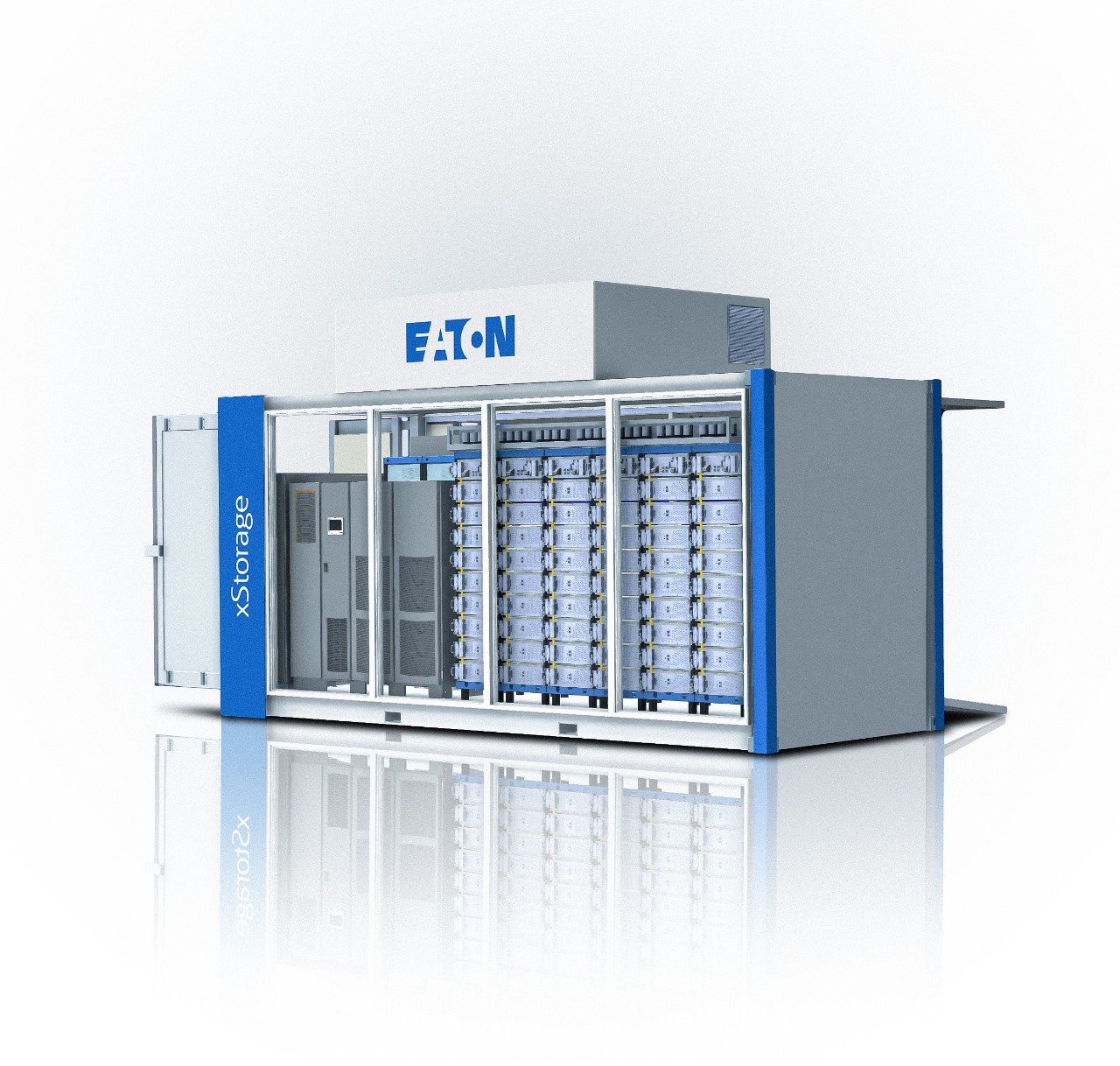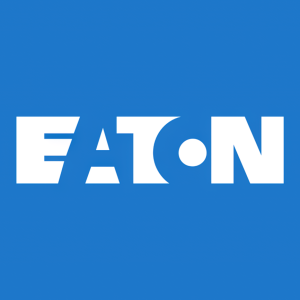Eaton Joins BIG LEAP Research and Development Project to Pioneer Adaptable Energy Storage Systems Harnessing Second-Life Batteries
Eaton has joined the BIG LEAP project, a Horizon Europe initiative involving 16 partners, to enhance energy storage systems using second-life batteries from electric vehicles.
The project will last three and a half years and aims to develop an open-source Battery Management System (BMS) that improves interoperability between various battery chemistries and architectures.
Eaton's team, based in Prague, will create a modular 500 kWh energy storage system at the Eaton European Innovation Center (EEIC) to demonstrate cost and energy savings in commercial buildings.
The project also aims to standardize a quicker and more cost-effective battery refurbishment process, strengthening the value chain for second-life batteries.
- Eaton's involvement in the BIG LEAP project enhances its position in the energy storage market.
- Collaboration with 16 leading partners including EDF and TATA Power strengthens Eaton's network and potential for innovation.
- The project aims to develop a standardized, cost-effective battery refurbishment process, potentially reducing operational costs.
- Creation of a modular 500 kWh energy storage system could showcase significant energy and cost savings, enhancing Eaton's market appeal.
- Development of an open-source Battery Management System (BMS) improves interoperability, expanding the potential applications of second-life batteries.
- Long project duration of three and a half years may delay potential benefits and returns.
- High dependency on the success of new technologies and standardization processes, which carry inherent risks.
- Initial focus on defining hardware and software requirements may involve significant upfront costs and resource allocation.
Insights
Eaton's involvement in the BIG LEAP project represents a significant step towards the advancement of energy storage systems leveraging second-life batteries, which are repurposed from electric vehicles. This project taps into growing trends in sustainability and circular economy, where the reuse of materials is paramount.
One of the most intriguing aspects of this initiative is the focus on developing an open-source Battery Management System (BMS). This has the potential to revolutionize the industry by providing a standardized approach to managing various battery chemistries and architectures, offering enhanced interoperability. Open-source solutions have the benefit of fostering collaboration and innovation across different sectors, which could lead to breakthroughs in energy efficiency and cost reduction.
Furthermore, the project's ambition to create a more cost-effective and faster refurbishment process is crucial. Standardized refurbishment could significantly lower the barriers to entry for second-life batteries, making them a viable option for more industries and applications.
In context, the modular 500 kilowatt-hour storage system that Eaton aims to develop could serve as a benchmark, demonstrating practical applications in commercial buildings. This is particularly relevant as businesses seek to reduce energy costs and consumption, aligning with global sustainability goals.
Overall, the technological advancements proposed could bring about long-term benefits in terms of improved battery lifecycle management, cost reductions and environmental impact mitigation.
The participation of key players such as EDF, TATA Power and the VTT Technical Research Center in the BIG LEAP consortium adds considerable weight to the project. It highlights a robust commitment to addressing global energy challenges through collaborative innovation. This synergy between academic and industrial stakeholders from Europe, India and Morocco underscores the project's potential to make a significant impact across diverse markets.
From an investor's perspective, Eaton’s role in this project positions the company at the forefront of energy storage innovation. This can translate into market leadership as the demand for sustainable energy solutions continues to grow. Investors should consider the potential market expansion and new revenue streams arising from the successful implementation of these technologies.
The modular and scalable design approach not only enhances product adaptability but also increases the flexibility to cater to different customer needs. This could lead to a wider adoption of second-life battery systems, driving growth in Eaton's renewable energy solutions segment.
It is essential to keep in mind that while the prospects are promising, execution risks remain. Coordinating efforts among 16 partners over a three-and-a-half-year period necessitates effective project management and alignment of objectives, which can be challenging.
From a financial viewpoint, Eaton's participation in the BIG LEAP project could influence its long-term financial performance. By investing in cutting-edge energy storage systems, Eaton is banking on the rising demand for sustainable energy solutions. This strategic move aligns with the increasing regulatory pressures and market demand for greener technologies.
The development of a cost-effective refurbishment process and an open-source BMS could potentially reduce operational costs over time, leading to improved profit margins. These innovations can also drive higher sales as businesses look for cost-efficient energy solutions.
However, the immediate financial impact may be limited due to the project's long-term nature. Investors should be mindful of the ongoing R&D expenditures, which may not yield immediate returns but could lay the foundation for substantial future gains.
Another financial aspect to consider is the potential for new partnerships and collaborations arising from this project. These could open up additional revenue channels and strengthen Eaton’s market position. Nevertheless, the dependency on multiple partners also introduces coordination and integration risks that need to be managed carefully.
- Eaton joins 16 leading partners in the BIG LEAP project, an ambitious R&D effort under the Horizon Europe initiative.
- Partners will enable interoperability between different battery chemistries and architectures, strengthening the value chain for second-life batteries.
- Partners will also develop a standardized battery refurbishment process that is faster and more cost-effective.
ROZTOKY, CZECH REPUBLIC / ACCESSWIRE / June 4, 2024 / Intelligent power management company Eaton announced its participation in the EU research and innovation project BIG LEAP. Lasting for three and a half years, this Horizon Europe program aims to enhance the efficiency, reliability and compatibility of energy storage using second-life batteries from varied electric vehicles.
The BIG LEAP consortium will design and validate an open-source Battery Management System (BMS) that improves interoperability between different battery chemistries and architectures. This includes the development of a flexible energy storage system that supports BMS integration and expands the potential applications of second-life batteries through a modular and scalable design. As well as strengthening existing value chains with more adaptable second-life batteries, the project also aims to develop a standardized battery refurbishment process that is faster and more cost-effective.
Led by the Brussels Research and Innovation Center for Green Technologies, the BIG LEAP consortium brings together 16 academic and industrial partners from Europe, India and Morocco. This includes EDF, TATA Power, and the VTT Technical Research Center, as well as other leading innovators in battery storage and power management systems.
Eaton's participation in the BIG LEAP project is spearheaded by the Eaton Research Labs (ERL) team in Prague, in close collaboration with the company's Energy Transition, Digital and Services Division. The team will develop and demonstrate a modular 500 kilowatt-hour energy storage system using second-life batteries at the Eaton European Innovation Center (EEIC), showing how it can reduce energy consumption and costs in commercial buildings. Eaton's team will also provide support in defining and designing a BMS compatible with different battery types.
During the next 12 months, the ERL team will focus on defining hardware and software requirements, choosing suppliers, and developing the use case for second-life battery integration in the EEIC demonstration system. They will also align with project partners on BMS development and an optimized approach to battery refurbishment.
About Eaton
Eaton is an intelligent power management company dedicated to protecting the environment and improving the quality of life for people everywhere. We make products for the data center, utility, industrial, commercial, machine building, residential, aerospace and mobility markets. We are guided by our commitment to do business right, to operate sustainably and to help our customers manage power ─ today and well into the future. By capitalizing on the global growth trends of electrification and digitalization, we're accelerating the planet's transition to renewable energy sources, helping to solve the world's most urgent power management challenges, and building a more sustainable society for people today and generations to come.
Eaton was founded in 1911 and has been listed on the New York Stock Exchange for more than a century. We reported revenues of
Contact (for journalist enquiries)
Nathalie Lapoirie,
NathalieLapoirie@eaton.com, Tel: +41 78 727 89 66
"We're thrilled to be part of a consortium that's changing the game in energy storage. By enabling greater compatibility between systems and components developed by different companies through the right architecture and algorithms, we can make sure batteries have a long and sustainable second life in one safe, reliable and cohesive system."
Oleksij Chumak, power system specialist, Eaton Research Labs
We make what matters work.
Power is a fundamental part of our world. That's why we're dedicated to improving people's lives and the environment with power management technologies that are more efficient, safe and reliable. Because that's what really matters. And we're here to make sure it works.
"Our contribution to the BIG LEAP project will really move the needle on sustainability-enabling customers to harness energy storage more cost-effectively, while also reducing the waste and emissions associated with battery production. This leap forward is critical if we're to create a low-carbon future for the next generation!"
Anne Lillywhite, senior vice president, Energy Transition, Digital and Services, Electrical Sector EMEA, Eaton
Energy transition
With a global shift to more renewable power, we have an opportunity to simplify energy systems to unlock a low-carbon future.

View additional multimedia and more ESG storytelling from Eaton on 3blmedia.com.
Contact Info:
Spokesperson: Eaton
Website: https://www.3blmedia.com/profiles/eaton
Email: info@3blmedia.com
SOURCE: Eaton
View the original press release on accesswire.com







